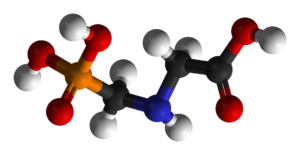October 24, 2017—San Diego, CA. We’ve been doing internet research on the highly controversial topic of the chemical developed by Monsanto Corporation called glyphosate, which California recently declared as a “known human carcinogen”, and may lead to non-Hodgkin lymphoma or another blood cancer. Source: https://oehha.ca.gov/proposition-65/crnr/glyphosate-listed-effective-july-7-2017-known-state-california-cause-cancer
Back in March 2017, the Office of Environmental Health Hazard Assessment (OEHHA) posted a Notice on its website[1] that glyphosate (CAS No. 1071-83-6) would be added to the list of chemicals known to the state to cause cancer for purposes of Proposition 65[2] with a delayed effective date due to the pending case Monsanto v OEHHA.[3]
Monsanto’s challenge was unsuccessful in the trial court. Although the case has been appealed, no stay of the listing has been granted. Therefore, glyphosate is being added to the Proposition 65 list on July 7, 2017.
Is the weed killer called Roundup affecting more than humans?
Here’s where our keyword research began: We found the website called ScienceDirect.com and used their internal search engine to display any science based studies done for the keyword phrase “Monsanto Roundup”. The search page returned 903 different studies all done on glyphosate.
It’s telling just by looking at the names of the studies to see that Roundup containing glyphosate impacts more than humans. Studies and tests, done worldwide, were performed on rats, fish, amphibians, mollusks, vegetation and more. All of these studies are available for download with certain restrictions.
We won’t delve into the actual studies done on Roundup, but focused on simply the titles of the studies. Here is a short sampling of the tests and studies:
Glyphosate and Roundup® alter morphology and behavior in zebrafish.
Reproductive toxicity of Roundup herbicide exposure in male albino rat.
Effects of Roundup formulations on biochemical biomarkers and male sperm quality of the livebearing Jenynsia multidentata.
Oxidative stress responses of rats exposed to Roundup and its active ingredient glyphosate.
Roundup Ready! Glyphosate and the Current Controversy Over the World’s Leading Herbicide.
Answers to critics: Why there is a long term toxicity due to a Roundup-tolerant genetically modified maize and to a Roundup herbicide.
Oxidative stress in the hybrid fish jundiara (Leiarius marmoratus × Pseudoplatystoma reticulatum) exposed to Roundup Original®.
Effects of glyphosate and the glyphosate based herbicides Roundup Original® and Roundup Transorb® on respiratory morphophysiology of bullfrog tadpoles.
Accumulation and detoxication responses of the gastropod Lymnaea stagnalis to single and combined exposures to natural (cyanobacteria) and anthropogenic (the herbicide RoundUp® Flash) stressors.
Using a toxicity test with Ruppia maritima (Linnaeus) to assess the effects of Roundup.
Effects of glyphosate acid and the glyphosate-commercial formulation (Roundup) on Dimorphandra wilsonii seed germination: Interference of seed respiratory metabolism.
Physiological and biochemical responses of Microcystis aeruginosa to glyphosate and its Roundup® formulation.
Toxic and genotoxic effects of Roundup on tadpoles of the Indian skittering frog (Euflictis cyanophlyctis) in the presence and absence of predator stress.
In vivo and in vitro effects of the herbicide Roundup® on developmental stages of the trematode Echinostoma paraensei.
Effects of different concentrations of glyphosate (Roundup 360®) on earthworms (Octodrilus complanatus, Lumbricus terrestris and Aporrectodea caliginosa) in vineyards in the North-East of Italy.
Low toxic herbicide Roundup induces mild oxidative stress in goldfish tissues.
Tracing two Roundup Ready™ soybean lines (GTS 40-3-2 and MON89788) in foods commercialized in Portugal.
Metabolic parameters and oxidative balance in juvenile Rhamdia quelen exposed to rice paddy herbicides: Roundup®.
Genotoxicity induced by Roundup® (Glyphosate) in tegu lizard (Salvator merianae) embryos.
Derivation of South African water quality guidelines for Roundup® using species sensitivity distribution
Analysis of endocrine disruption effect of Roundup® in adrenal gland of male rats.
Comparative effects of the Roundup and glyphosate on mitochondrial oxidative phosphorylation.
Relative toxicity of the components of the original formulation of Roundup® to five North American anurans.
Acute toxicity of Roundup® herbicide to three life stages of the freshwater shrimp Caridina nilotica (Decapoda: Atyidae).
Effects of Roundup and glyphosate formulations on intracellular transport, microtubules and actin filaments in Xenopus laevis melanophores.
The response of amphibian larvae to exposure to a glyphosate-based herbicide (Roundup WeatherMax) and nutrient enrichment in an ecosystem experiment.
Genotoxic effects of Roundup® on the fish Prochilodus lineatus.
Using growth measures in the freshwater shrimp Caridina nilotica as biomarkers of Roundup® pollution of South African freshwater systems.
The effect of sub-acute and sub-chronic exposure of rats to the glyphosate-based herbicide Roundup.
The teratogenic potential of the herbicide glyphosate-Roundup® in Wistar rats.
Long-term sub-lethal effects of low concentration commercial herbicide (glyphosate/pelargonic acid) formulation in Bryophyllum pinnatum.
Impact of Roundup on the marine microbial community, as shown by an in situ microcosm experiment.
Effects of glyphosate-based herbicides on survival, development, growth and sex ratios of wood frog (Lithobates sylvaticus) tadpoles. II: Agriculturally relevant exposures to Roundup WeatherMax® and Vision® under laboratory conditions.
Genotoxic and biochemical effects of atrazine and Roundup®, alone and in combination, on the Asian clam Corbicula fluminea.
Effects of the herbicide Roundup™ on the ultrastructural pattern of hepatocytes in carp (Cyprinus carpio).
Who has been exposed to Roundup?
The easy answer is EVERYONE. Roundup is prolific in the environment. It has been sprayed on millions of acres of farmland since Roundup Ready seeds were introduced in the late 1990s and has been used by millions of Americans at home since the 1970s.
The use of Roundup has increased 10-fold in the past 20 years, according to a Consumer Reports article published shortly after IARC announced its assessment of glyphosate in March 2015. Dr. Benbrook of Washington State University told Consumer Reports, “When a single pesticide is used that widely, people can’t help but be exposed to it.”
When pesticides like Roundup are applied to fields or yards, their residues can wind up in our drinking water and our food. That means virtually everyone is at risk for exposure, though some may be more at risk than others.
Occupations that require workers to handle Roundup directly or indirectly may be most at-risk. A few examples of these occupations include:
- Crop farm workers and laborers
- Nursery or greenhouse workers
- Agricultural equipment operators
- Soil scientists and surveyors
You don’t have to work on a farm to be exposed to Roundup. Glyphosate residues are found in the air and drinking water near agricultural fields where they are applied, putting whole communities at risk.
Are Roundup class action lawsuits happening?
BREAKING NEWS: Federal Judge Rules Monsanto Cancer lawsuit may move forward.
July 12, 2018 – San Diego, CA. U.S. District Judge Vince Chhabria made it clear that Monsanto’s Roundup weed killer product lawsuit should be allowed to proceed.
There are close to 5,000 lawsuits currently filed against Monsanto claiming its product called Roundup causes Non-Hodgkin’s lymphoma, a type of blood cancer from exposure to this chemical spray.
This court verdict is a step forward for these claimants. These lawsuits were filed throughout the U.S. and were consolidated before Judge Chhabria in In re: Roundup Products Liability Litigation (MDL No. 2741).
Since IARC made the determination that Roundup is probably cancer-causing to humans lawsuits have been filed against Monsanto on behalf of individuals who were diagnosed with non-Hodgkin lymphoma or any of its subtypes.
In September and October of 2015, lawsuits were filed in California and Delaware state courts against Monsanto. These lawsuits allege clients suffered exposure to Roundup in crop fields, commercial nurseries and at home, and that prior to IARC’s evaluation, they did not know or could not have known about the cancer-causing danger of glyphosate and Roundup. Learn about the current Roundup lawsuit here.
Free Case Evaluation
Contact Us today for a FREE, Immediate Case Evaluation
Contact Us today for a FREE, Immediate Case Evaluation
Categories
Recent post
- When Pet Owners Fail to Control Aggressive Dogs: Legal Options for Bite Victims in California
- Rideshare Driver or Passenger? Legal Steps to Take After a California Uber or Lyft Accident
- Crosswalk Accidents: When California Drivers Fail to Yield and Pedestrians Pay the Price
- Parents, Teens, and Texting: Addressing the Dangers of Distracted Driving Among Young Drivers in California
- California Rideshare Accidents Involving Minors: What Parents Need to Understand






